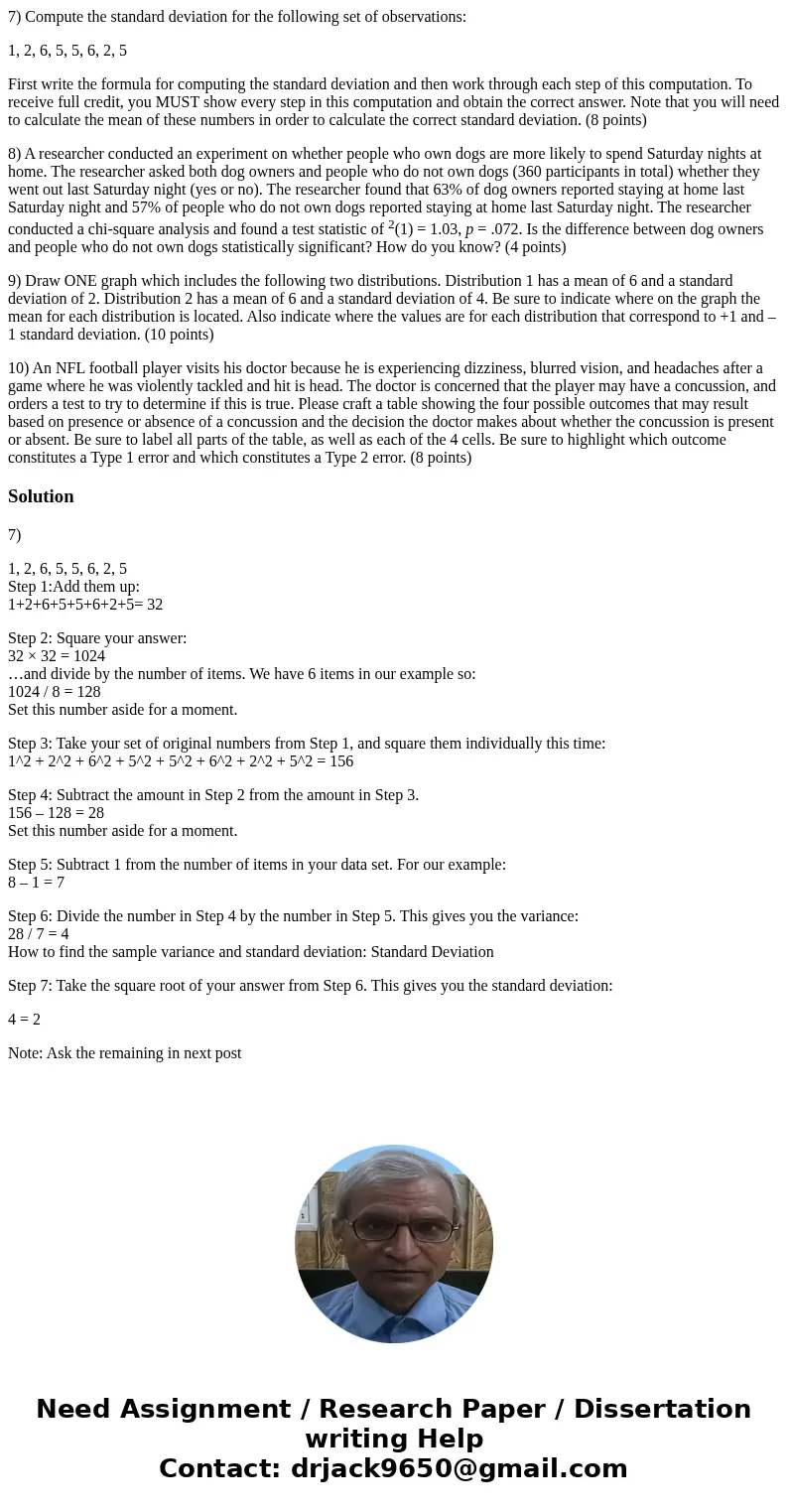7 Compute the standard deviation for the following set of ob
7) Compute the standard deviation for the following set of observations:
1, 2, 6, 5, 5, 6, 2, 5
First write the formula for computing the standard deviation and then work through each step of this computation. To receive full credit, you MUST show every step in this computation and obtain the correct answer. Note that you will need to calculate the mean of these numbers in order to calculate the correct standard deviation. (8 points)
8) A researcher conducted an experiment on whether people who own dogs are more likely to spend Saturday nights at home. The researcher asked both dog owners and people who do not own dogs (360 participants in total) whether they went out last Saturday night (yes or no). The researcher found that 63% of dog owners reported staying at home last Saturday night and 57% of people who do not own dogs reported staying at home last Saturday night. The researcher conducted a chi-square analysis and found a test statistic of 2(1) = 1.03, p = .072. Is the difference between dog owners and people who do not own dogs statistically significant? How do you know? (4 points)
9) Draw ONE graph which includes the following two distributions. Distribution 1 has a mean of 6 and a standard deviation of 2. Distribution 2 has a mean of 6 and a standard deviation of 4. Be sure to indicate where on the graph the mean for each distribution is located. Also indicate where the values are for each distribution that correspond to +1 and – 1 standard deviation. (10 points)
10) An NFL football player visits his doctor because he is experiencing dizziness, blurred vision, and headaches after a game where he was violently tackled and hit is head. The doctor is concerned that the player may have a concussion, and orders a test to try to determine if this is true. Please craft a table showing the four possible outcomes that may result based on presence or absence of a concussion and the decision the doctor makes about whether the concussion is present or absent. Be sure to label all parts of the table, as well as each of the 4 cells. Be sure to highlight which outcome constitutes a Type 1 error and which constitutes a Type 2 error. (8 points)
Solution
7)
1, 2, 6, 5, 5, 6, 2, 5
Step 1:Add them up:
1+2+6+5+5+6+2+5= 32
Step 2: Square your answer:
32 × 32 = 1024
…and divide by the number of items. We have 6 items in our example so:
1024 / 8 = 128
Set this number aside for a moment.
Step 3: Take your set of original numbers from Step 1, and square them individually this time:
1^2 + 2^2 + 6^2 + 5^2 + 5^2 + 6^2 + 2^2 + 5^2 = 156
Step 4: Subtract the amount in Step 2 from the amount in Step 3.
156 – 128 = 28
Set this number aside for a moment.
Step 5: Subtract 1 from the number of items in your data set. For our example:
8 – 1 = 7
Step 6: Divide the number in Step 4 by the number in Step 5. This gives you the variance:
28 / 7 = 4
How to find the sample variance and standard deviation: Standard Deviation
Step 7: Take the square root of your answer from Step 6. This gives you the standard deviation:
4 = 2
Note: Ask the remaining in next post

 Homework Sourse
Homework Sourse